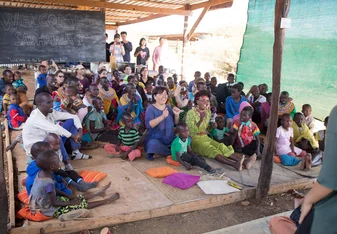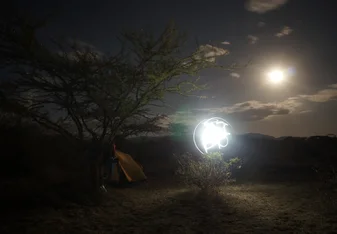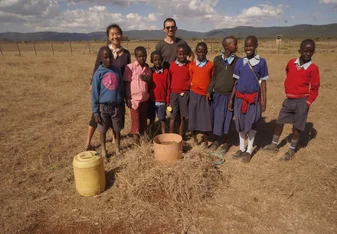I had already spent a good amount of time at Sadhana Forest India and think of it as my second - or maybe first - home. I was really interested to see how the organization worked in another, very different part of the world. While the India project works mostly with replanting the forest indigenous on publicly protected lands, the Kenya project works primarily on planting drought-resistant, food-producing trees on privately held land such as homes, schools and churches. I thought it would be a great way to support local people while traveling.
Alumni Spotlight: Mike Roy
Mike grew up in the USA and has been living and traveling in Asia since he first moved there in 2006. He has worked as an English teacher in South Korea, ridden his bicycle over 30,000 km in 14 countries, and spent time at a number of permaculture projects.
Why did you choose this program?
What did your program provider assist you with, and what did you have to organize on your own?
I didn't have any sort of program provider. Some friends and I were already at Sadhana Forest India and contacted Sadhana Forest Kenya directly. We organized our own flights. Since we were traveling in a large group, the staff at Sadhana Forest Kenya helped us to organize transportation from Nairobi to the site. On the way back, I organized the transportation on my own. It was affordable and not particularly difficult.
What is one piece of advice you'd give to someone going on your program?
Be ready for a new experience! Sadhana Forest is in a pretty remote part of Kenya. The landscapes are beautiful, wide-open semi deserts spotted with loads of zebras and gazelles, plus occasional hyenas, elephants and lions. There are NONE of the usual shopping or entertainment facilities that you are probably used to, so volunteers need to be relatively self-sufficient. Bring some books, an instrument, a journal, a camera, a meditative practice, or something else to do in your down time. The campus does have wifi access and plenty of charging power.
Also, be aware that this and other Sadhana Forest projects are places to do service. The focus is on using our time and energy to bring benefits to the local environment and population. The experience of living simply and focusing primarily on giving is one great gift that Sadhana Forest can offer to volunteers.
What does an average day/week look like as a participant of this program?
All the exact details are available on the website and in the welcoming email that Sadhana Forest Kenya will send you once you've contacted them.
Volunteers wake before or around 6:00AM and generally do some work on the land (tree planting, watering, tree care) in the early morning. Then breakfast, then another work session, then lunch, then a break, then some more work before dinner. Volunteers can expect to be working at least six hours per day (which is great, because there's not much else to do there aside from admiring the scenery).
Sadhana Forest Kenya also makes regular trips to nearby homes, schools, churches, hospitals, villages, etc., to plant trees. Generally these trips require two visits - one before lunch to make mounds and prepare for planting, and then one before dinner to actually plant the trees.
Volunteers also participate in cooking meals, cleaning the kitchen, dealing with the food and human waste compost, and other routine maintenance tasks.
There is a weekly Samburu market every Saturday where you can go to buy clothing, produce, simple snacks and souvenirs.
Going into your experience abroad, what was your biggest fear, and how did you overcome it? How did your views on the issue change?
I did not have any particular fears concerning my trip to Sadhana Forest Kenya. I have known the organization for a long time and was confident that I would encounter a truly eco-friendly campus and participate in work that was really serving local needs.
I must admit I was a little apprehensive about Kenya in general; much of what I had read made me a little anxious about the risks of petty theft. I was a little more careful than usual and had no problems at Nairobi or on the way to or from Sadhana Forest Kenya. At Sadhana Forest Kenya itself, I felt 100% comfortable.
What is it like to live a really eco-frienldy lifestyle?
It's awesome! Sadhana Forest serves fresh, local vegan food; composts all food and human waste; uses biodegradable toiletries and cleaning agents; runs on solar and wind power; draws water up from its own bore well; provides free water and charging power to locals; AND actively improves the environment by planting food-producing trees with local people.
Sadhana Forest is a fantastic place to live a life of consciousness, compassion and service. It's also a great way to experience a remote part of Kenya and to get to know local people.


